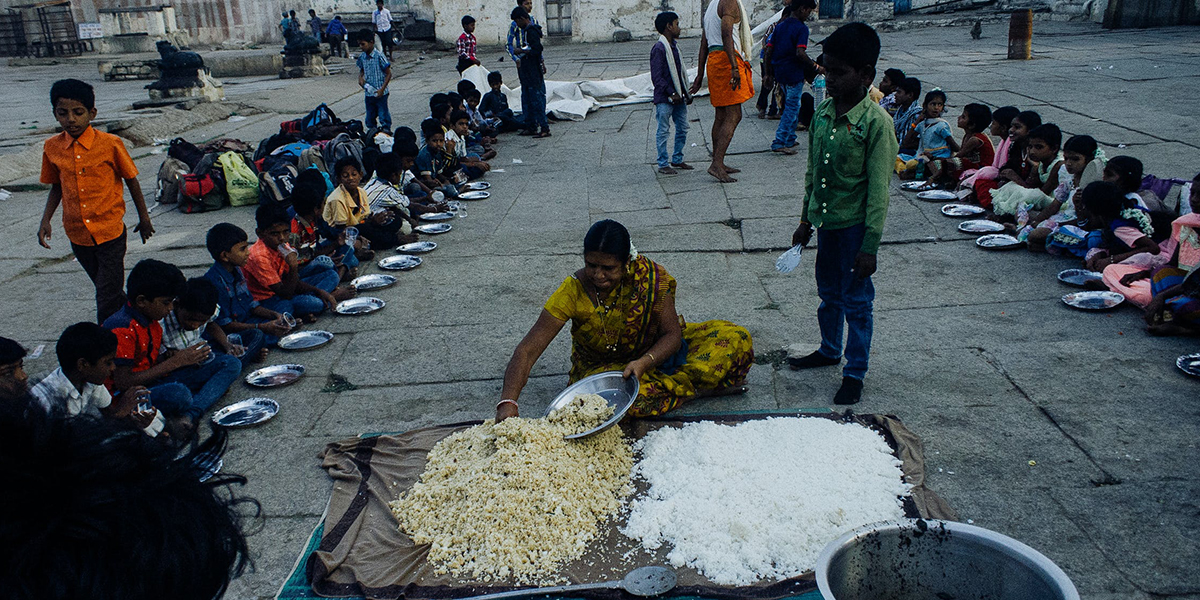
After decades of steady decline, the number of people who suffer from hunger – as measured by the prevalence of undernourishment – began to slowly increase again in 2015. Current estimates show that nearly 690 million people are hungry, or 8.9 percent of the world population – up by 10 million people in one year and by nearly 60 million in five years.
The world is not on track to achieve Zero Hunger by 2030. If recent trends continue, the number of people affected by hunger would surpass 840 million by 2030.
According to the World Food Programme, 135 million suffer from acute hunger largely due to man-made conflicts, climate change and economic downturns. The COVID-19 pandemic could now double that number, putting an additional 130 million people at risk of suffering acute hunger by the end of 2020.
With more than a quarter of a billion people potentially at the brink of starvation, swift action needs to be taken to provide food and humanitarian relief to the most at-risk regions.
At the same time, a profound change of the global food and agriculture system is needed if we are to nourish the more than 690 million people who are hungry today – and the additional 2 billion people the world will have by 2050. Increasing agricultural productivity and sustainable food production are crucial to help alleviate the perils of hunger.
Hunger is on the rise again globally and undernutrition continues to affect millions of children. Public investment in agriculture globally is declining, smallscale food producers and family farmers require much greater support and increased investment in infrastructure and technology for sustainable agriculture is urgently needed.
- An estimated 821 million people – approximately 1 in 9 people in the world – were undernourished in 2017, up from 784 million in 2015. This represents a worrying rise in world hunger for a third consecutive year after a prolonged decline. Africa remains the continent with the highest prevalence of undernourishment, affecting one fifth of its population (more than 256 million people). Consistent with the continued growth in undernourishment, 770 million people faced severe food insecurity in 2017.
- Stunting has been decreasing in nearly every region since 2000. Still, more than 1 in 5 children under 5 years of age (149 million) were stunted in 2018. Globally, 49 million children under 5 were affected by wasting and another 40 million were overweight in 2018.
- Strengthening the resilience and adaptive capacity of small-scale and family farmers, whose productivity is systematically lower than all other food producers, is critical to reversing the trend of the rise in hunger. The share of small-scale food producers in terms of all food producers in countries in Africa, Asia and Latin America ranges from 40 to 85 per cent, compared with fewer than 10 per cent in Europe.
- Government spending on agriculture compared to agriculture’s contribution to the total economy has declined by 37 per cent; the ratio fell from 0.42 in 2001 to 0.26 worldwide in 2017. In addition, aid to agriculture in developing countries fell from nearly 25 per cent of all donors’ sector-allocable aid in the mid-1980s to only 5 per cent in 2017, representing a decrease of $12.6 billion.
- A continuous downward trend has been observed in export subsidy outlays reported to the World Trade Organization (WTO). The total outlays fell from close to $500 million in 2010 to around $120 million in 2016. This reduction in export subsidies by Governments is leading to lower distortions in agricultural markets.
